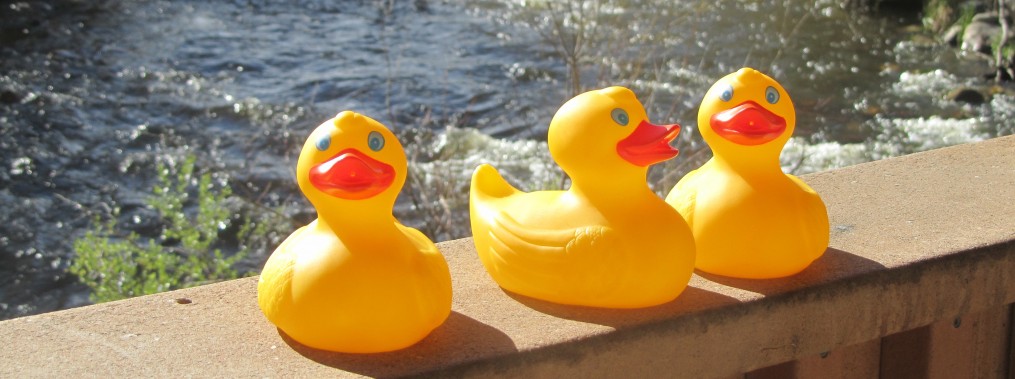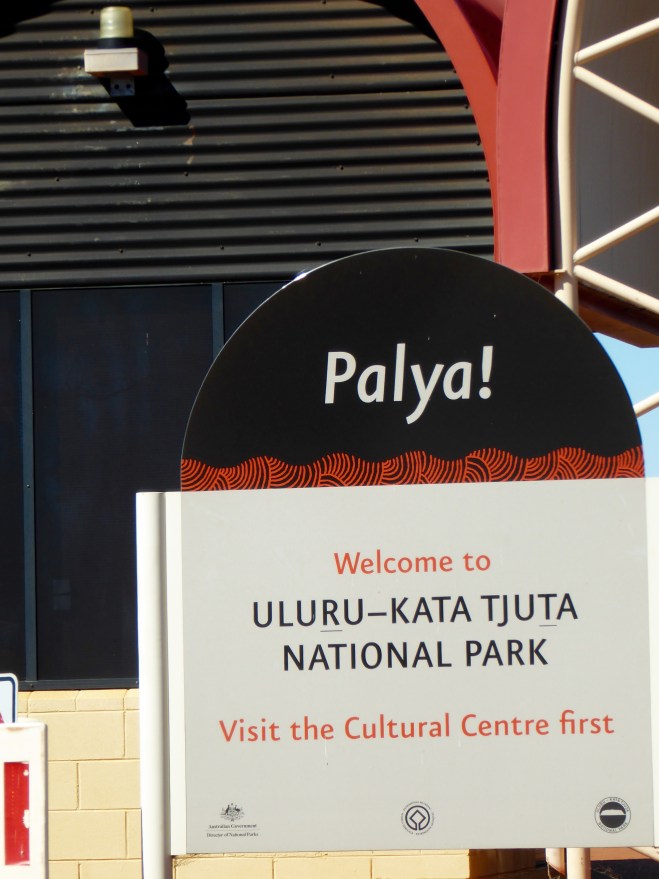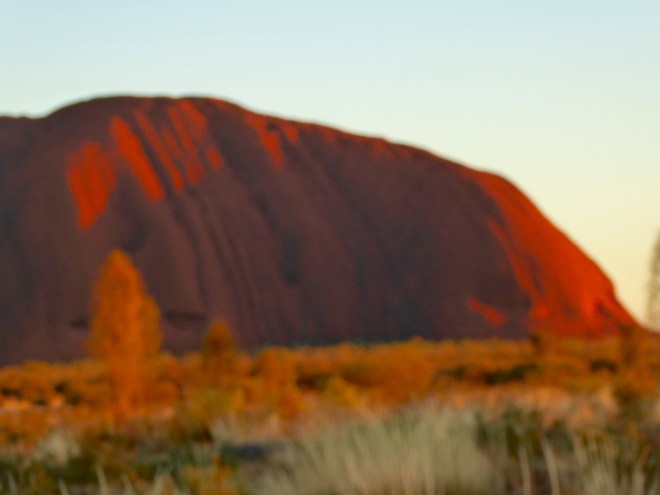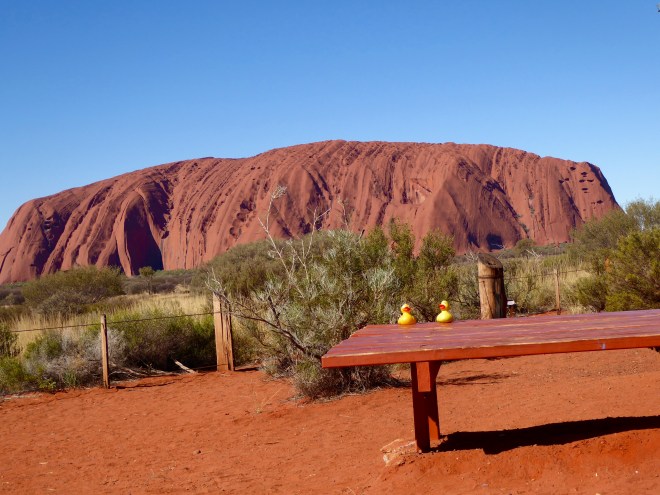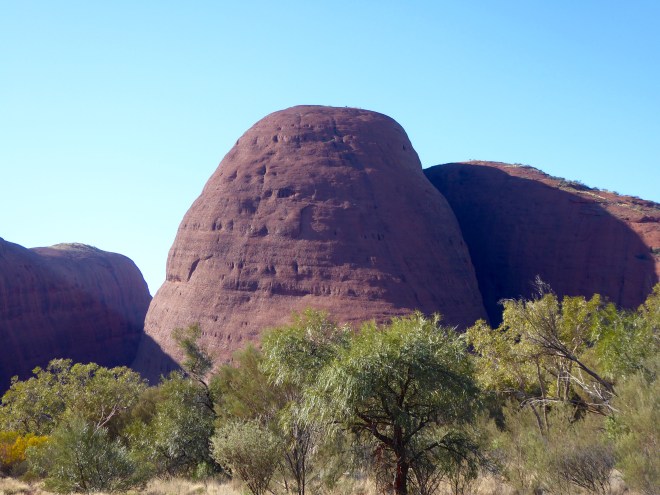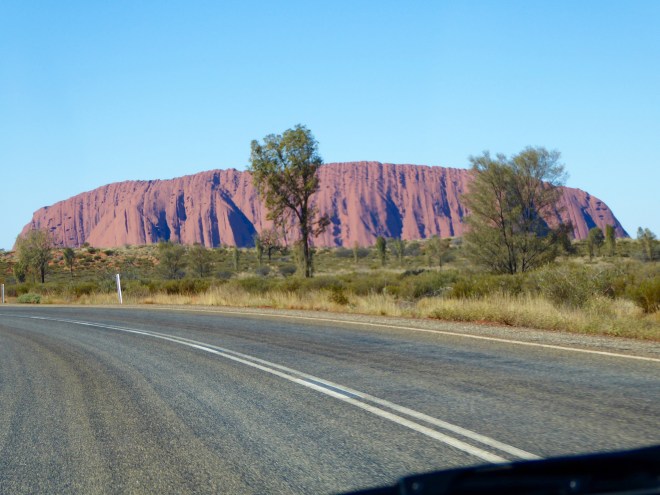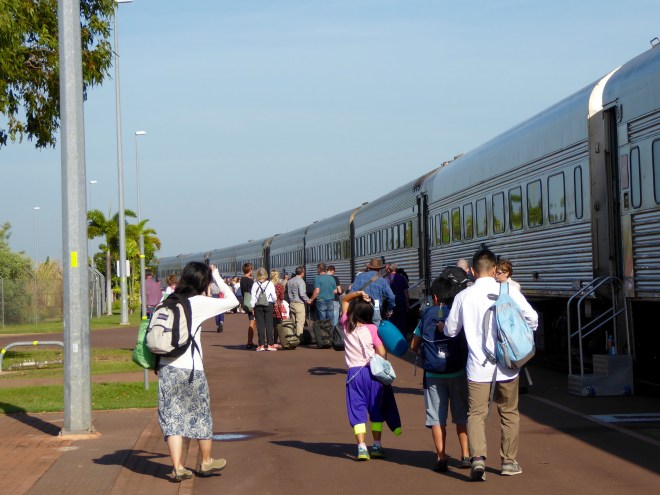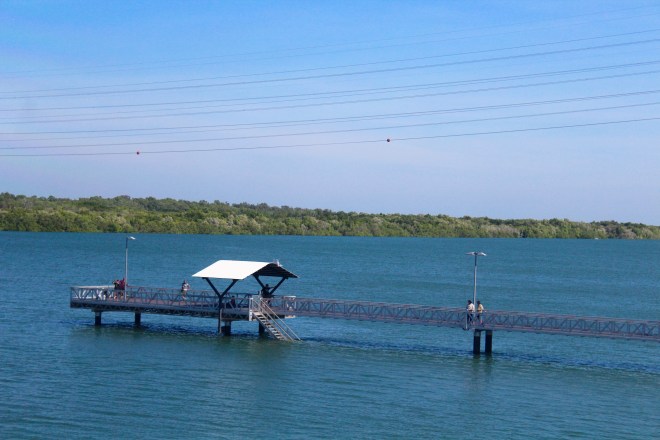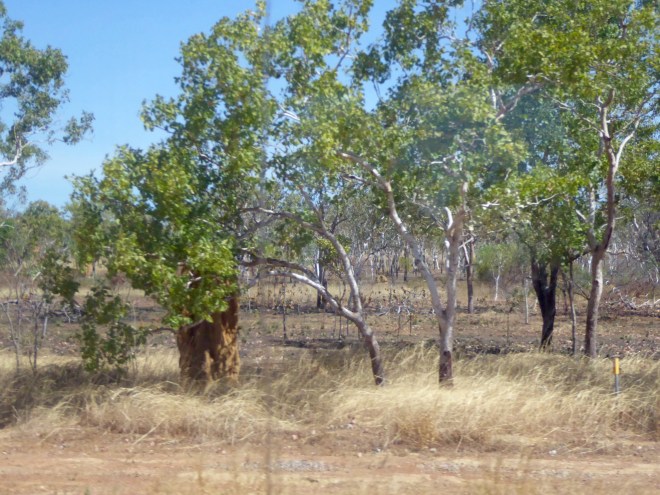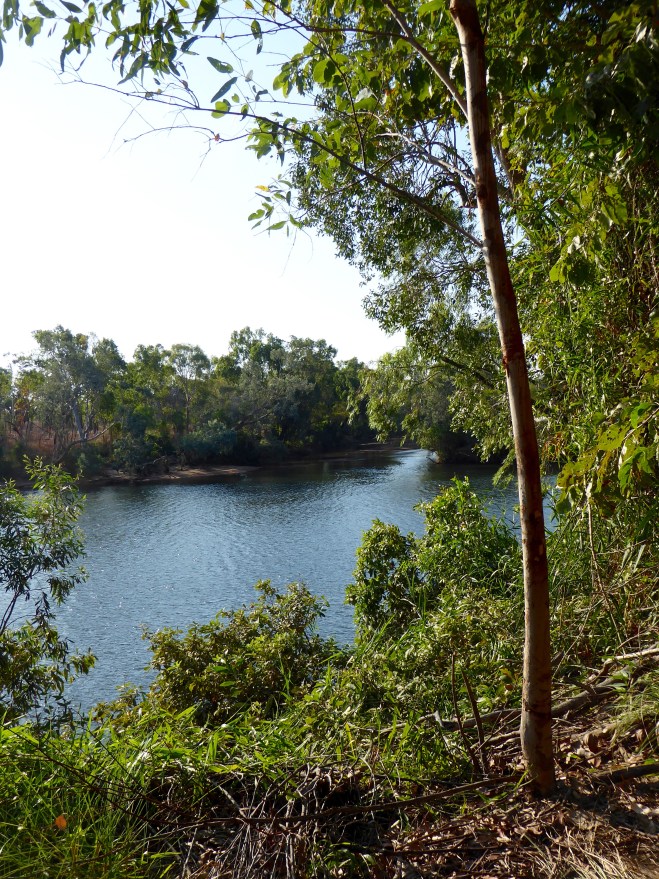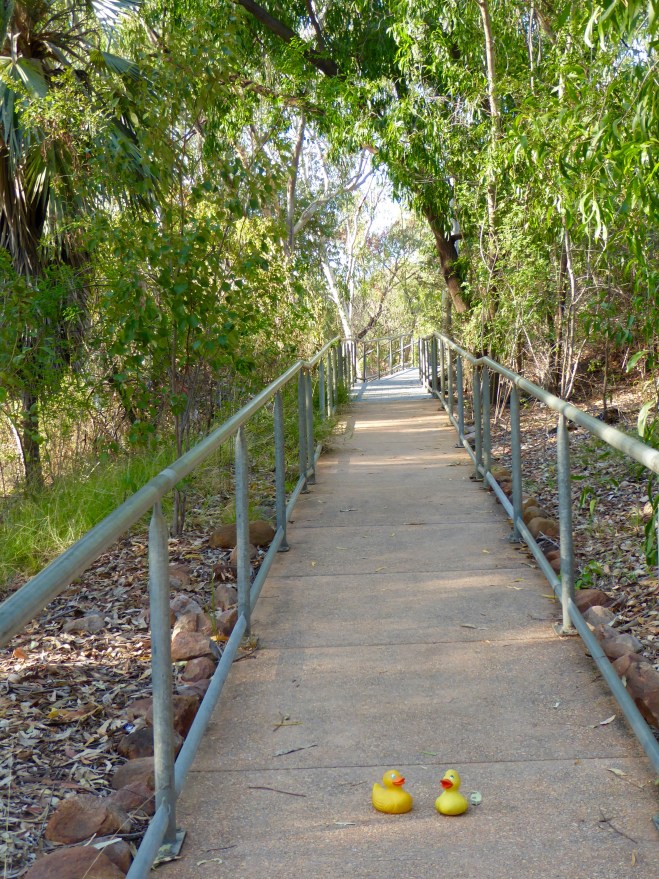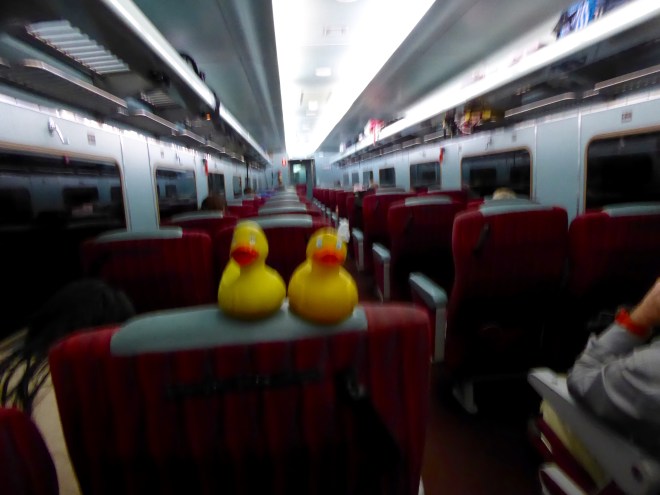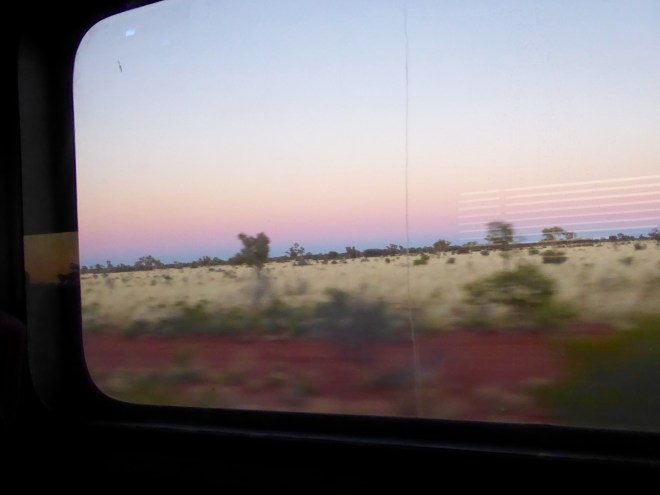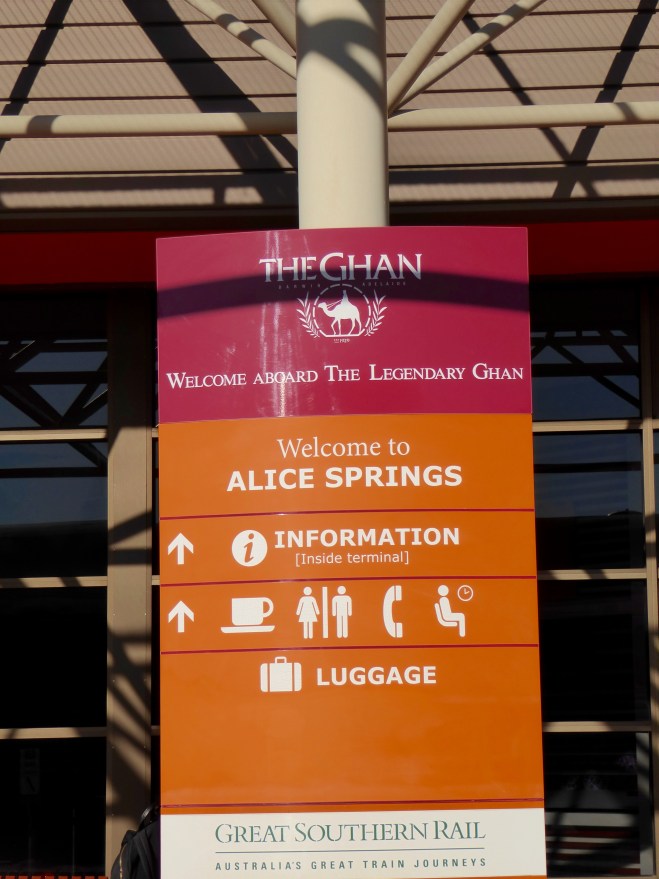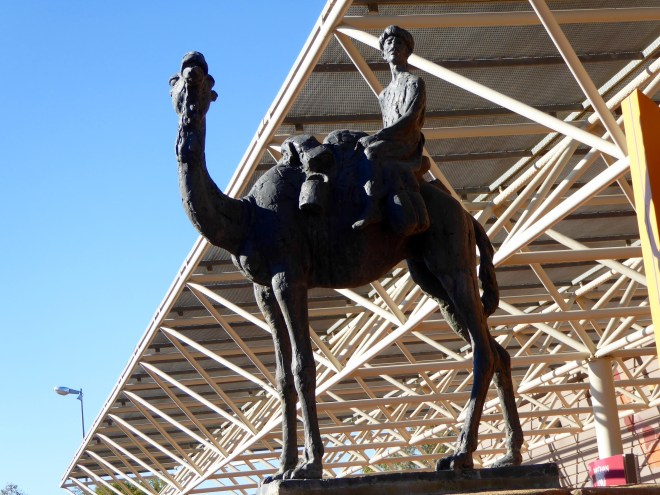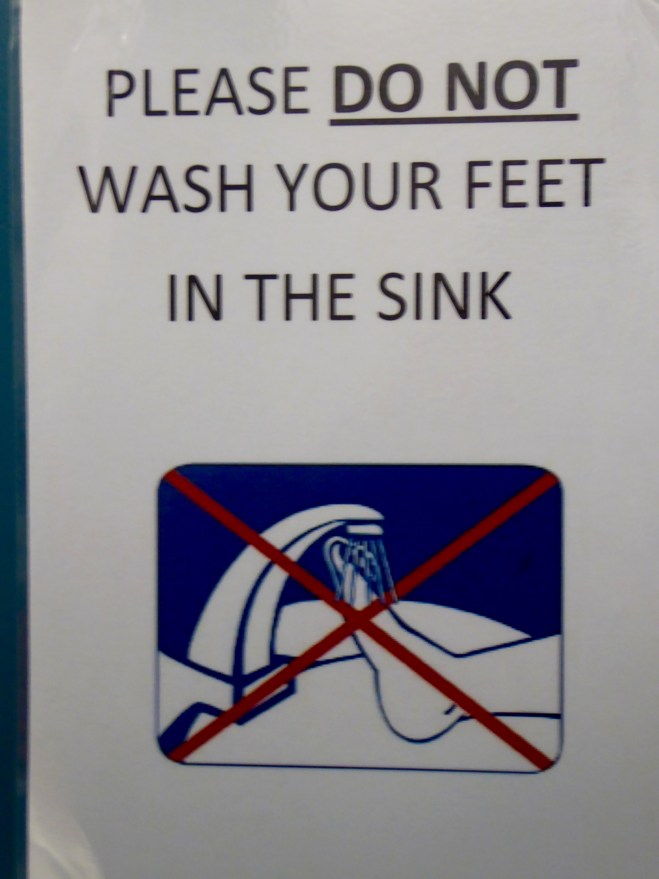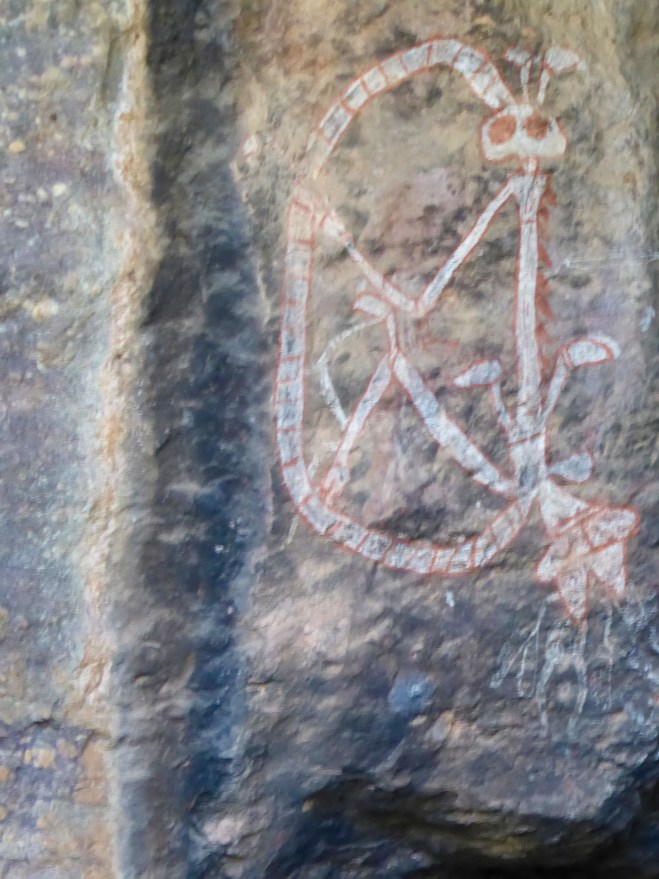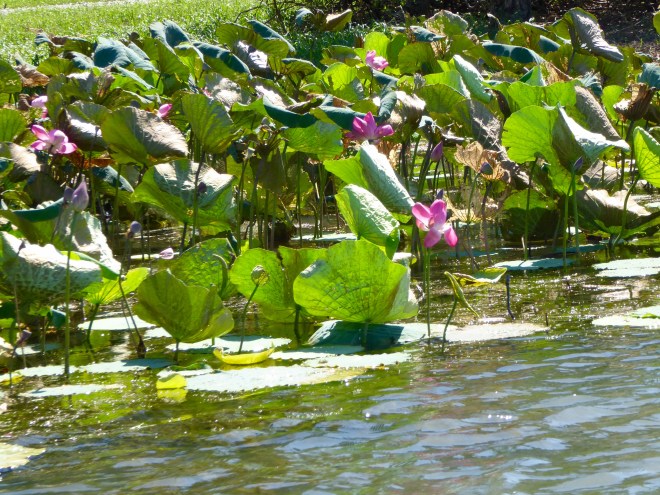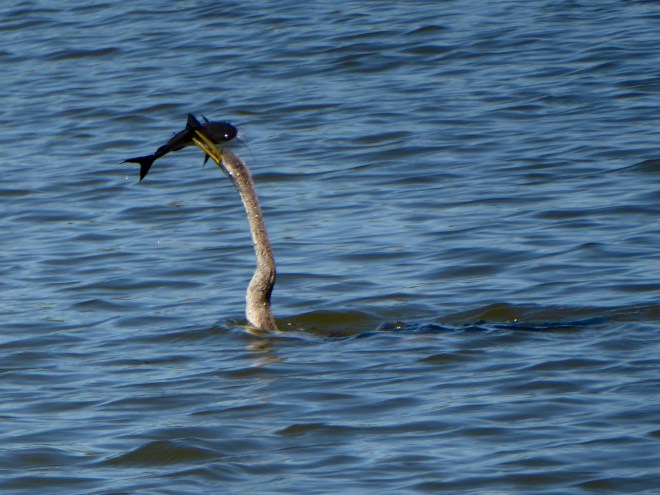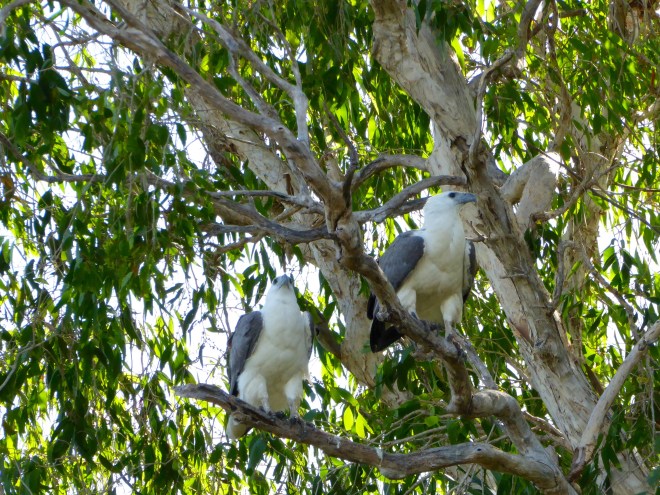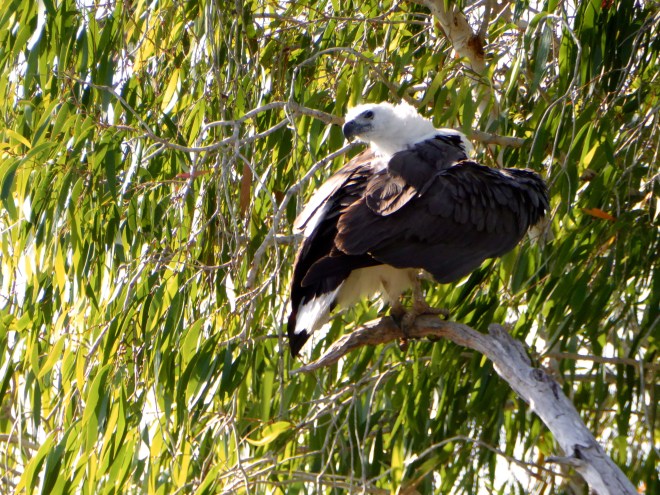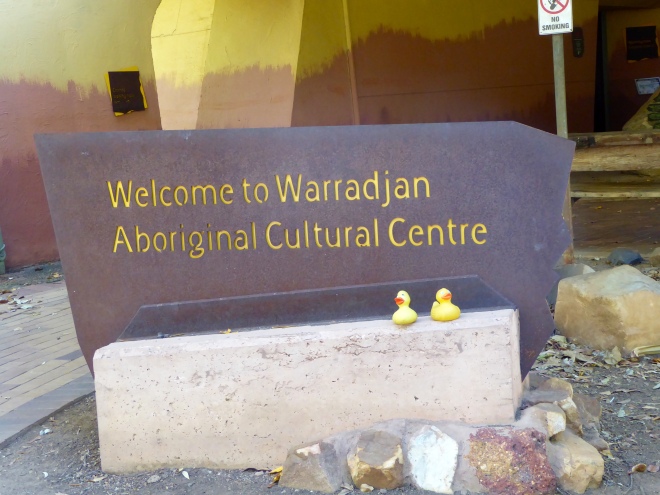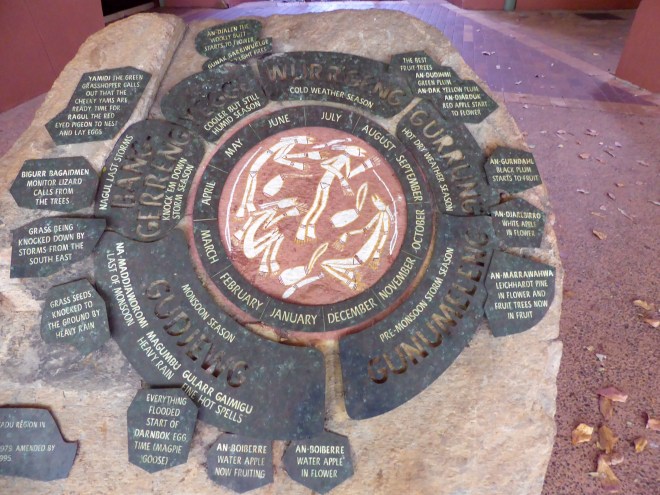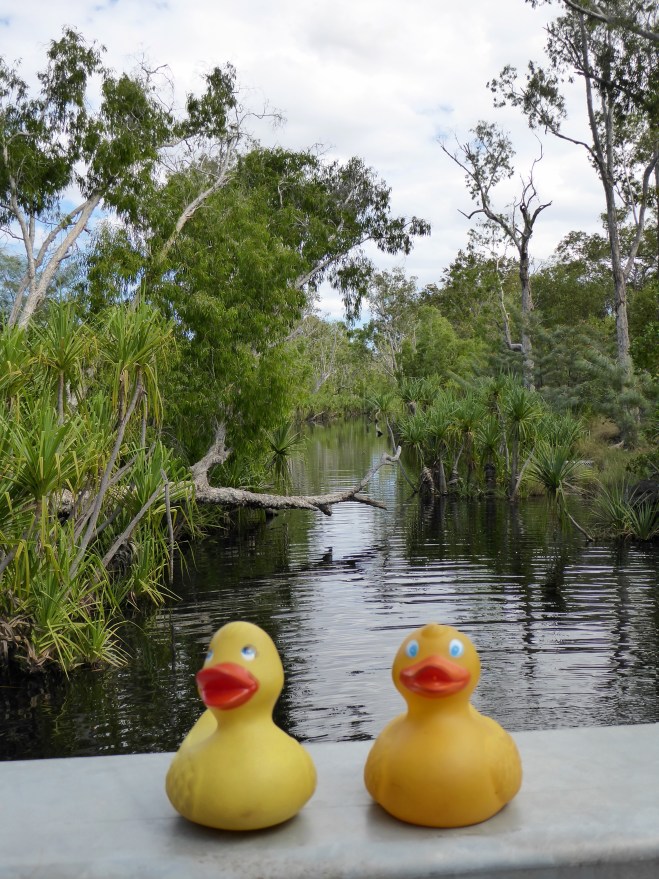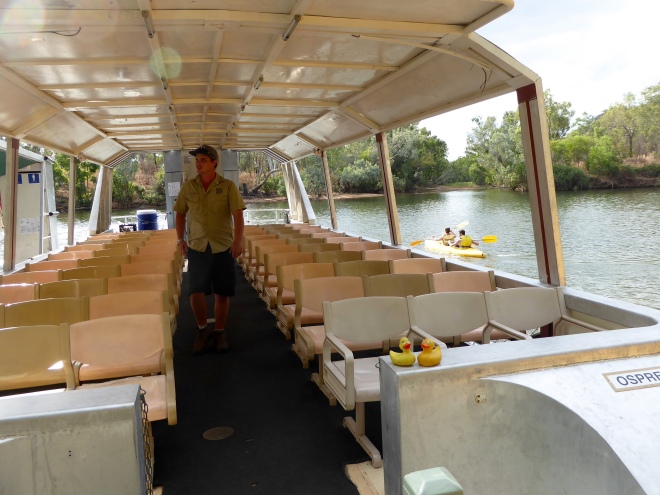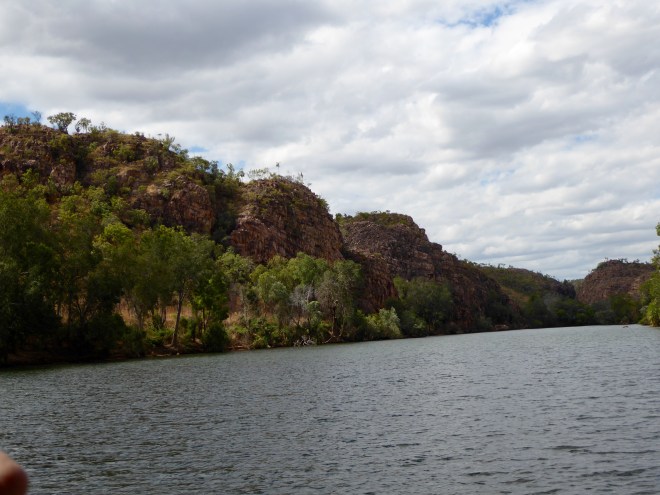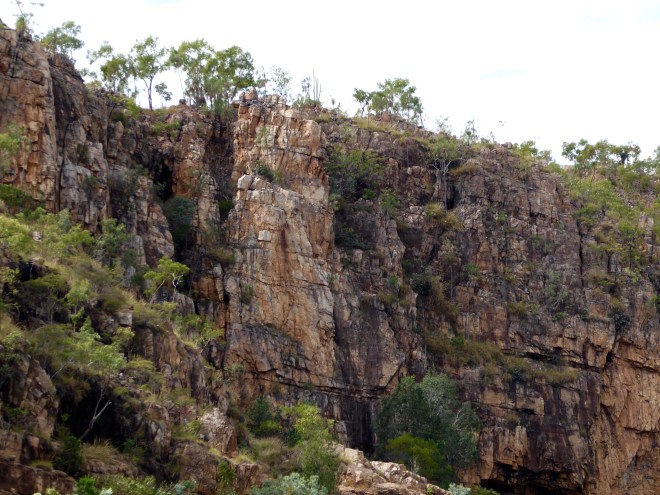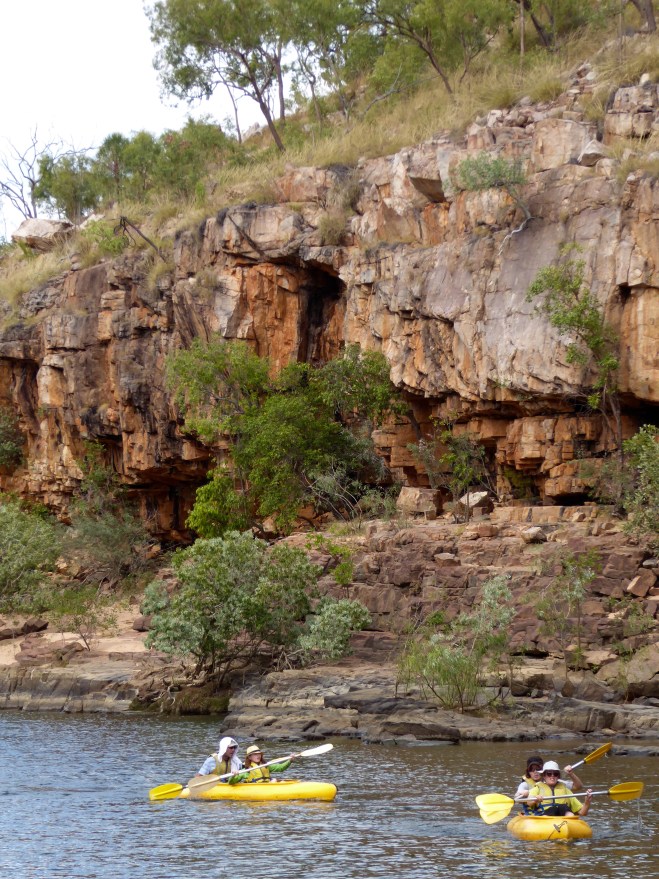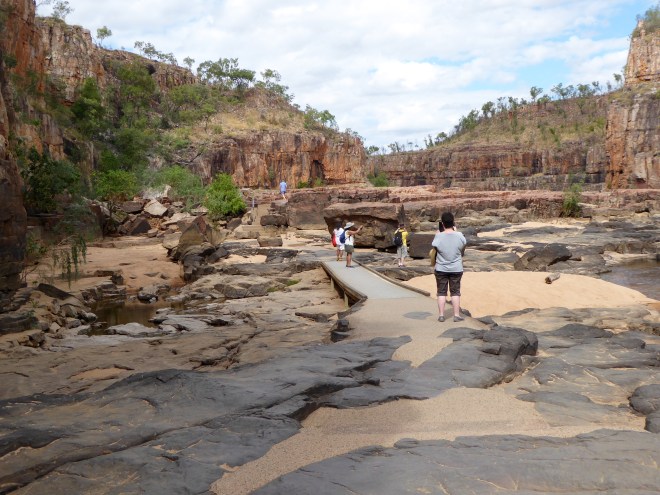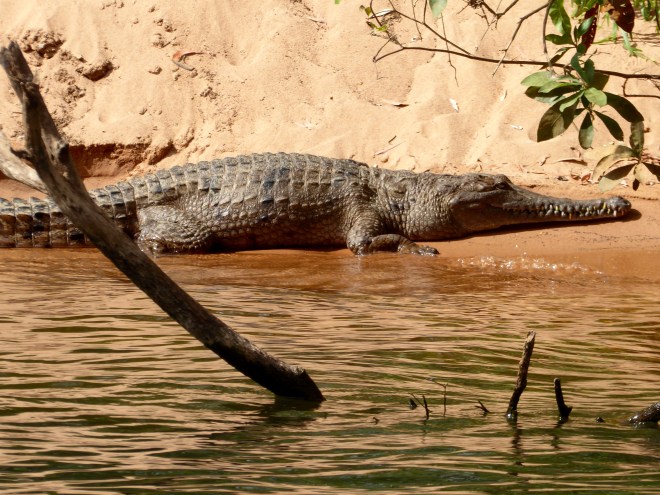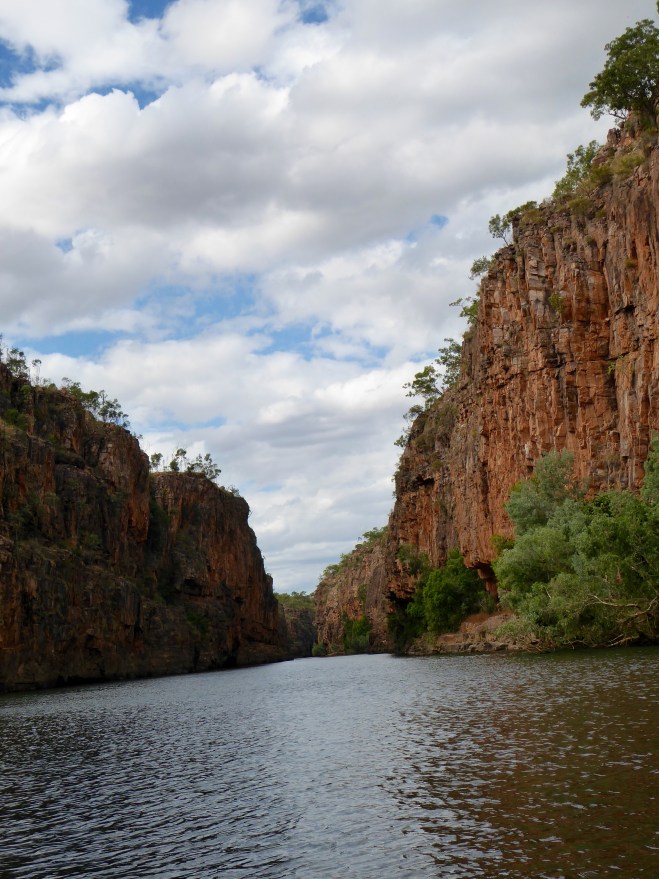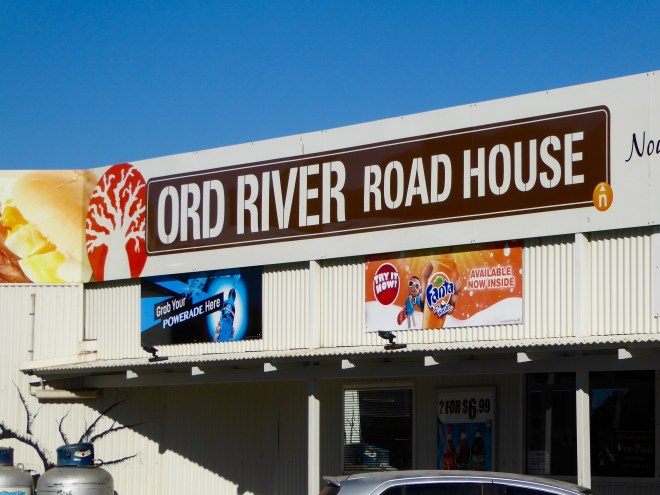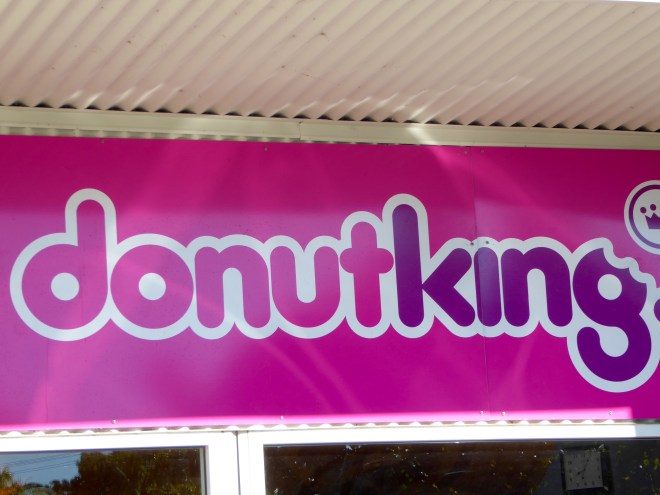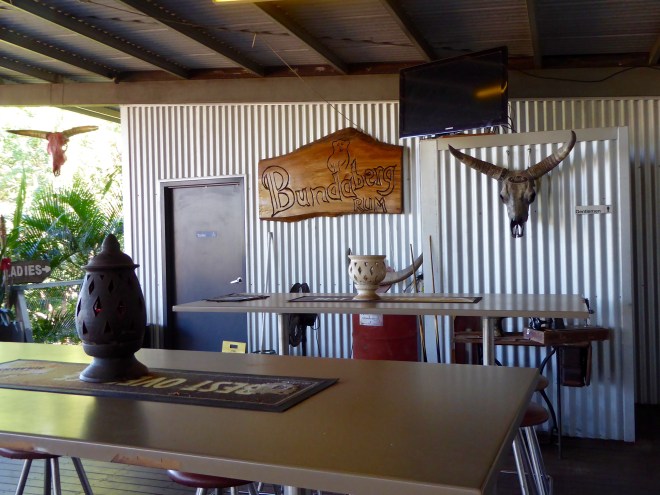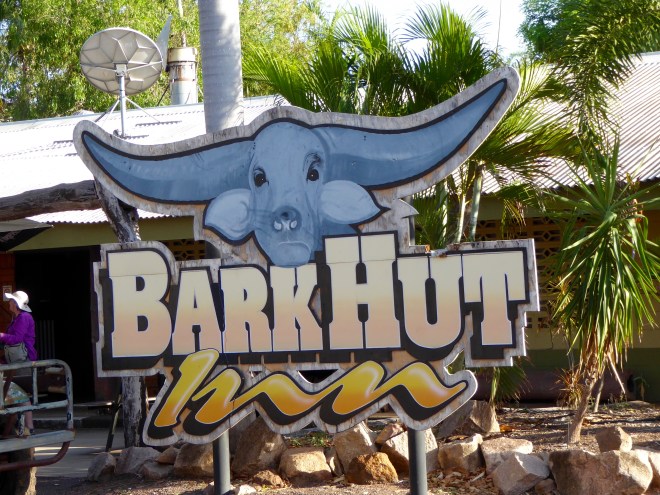Zeb and Eider and the humans visited Uluru-Kata Tjuta National Park.
We arrived in the afternoon and immediately arranged to view Uluru, previously called Ayers Rock, at sunset. The rock seems to change color as the sun begins to set.
This is one of our favorite sunset photos.
The next morning we returned to view the sunrise. The sun is hitting Uluru now, creating light and great shadows.
The rock is so large that photographs are difficult. From Uluru, we could see the rising sun reflect on the Kata Tjuta formation.
The entire scene of sunrise and huge rocks is very impressive. Later we drove around Uluru. You can see the rock is not smooth.
The uneven surface and holes or small caves, make the rock more interesting and mysterious to us. Many humans walk round the rock,and many climb Uluru.
Climbing Uluru can be dangerous and the native aboriginal people ask you not to climb their sacred sites. We sat here close to the ground, but we did not climb Uluru.
It is very impressive to walk round the area, gazing at the 1,150 feet, or 350 meters of the giant monolith that is above ground.
Geologists say that Uluru is the summit of a massive underground chunk of sandstone, about 600 million years old. About 10% of the rock is visible. Next we drove 20 miles (32km) west to Kata Tjuta, or the Olgas. Kata Tjuta is a cluster of 36 sandstone and arkose (sedimentary rock formed from granite sands).
The largest, Mount Olga, rises 1,800 feet (549 meters) above the ground.
Scientists believe Kata Tjuta was part of a giant monolith about 10 times the size of Uluru. Kata Tjuta has fewer visitors than Uluru and there are no facilities or water available. Also, no climbing on the rocks is permitted There are several hikes around the rocks, but visitors must stay on the trails. The winds were pretty strong when we were there. This is the trail to the Olga Gorge.
We are getting closer.
It is quite windy now. People can hike to the gorge, but not climb on the rocks.
We liked Kata Tjuta,
and Uluru.
When you visit, we think you will really enjoy the park. We also think you will take hundreds of photos of the rocks. Our humans did.
